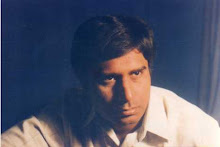Archetypes are the original objects, patterns, images or even characters, events or situations from which the same is copied in various forms of art and literature. The Platonic idea of the world beyond the world of substance provides an ideal example of the archetype that led to the various prototypes of heaven. Similarly Plato’s concept of the table with one horizontal top and vertical supports constitutes the archetype of all tables regardless of its size, shape form and function.
There are numerous forms of the archetype in literature. They are manifest in form of an idea, character, event and situation or even setting with some essential characteristics derived from some primitive or folk art form that render and general and universal value to that work rather than particular sophisticated or unique. The archetypes owe their origin to the myths, legends, folk tales, rituals and even dreams and customs. After the advent of Sigmund Freud and Jung, there had been a great stress on the role of psychological archetypes, referring to the unconscious originals, in art and literature. The use of archetypes by D.H. Lawrence and Salvador Dali makes and fine instance of the importance of archetypes in contemporary art and literature. The sudden rise in the treatment of myths and legends by the great names like James Joyce and T. S. Eliot is another prominent testimony of the importance of archetypes in the twentieth century art and literature. The structural manifestation of the archetype in expressed with unambiguous authority the structural patterns of a tragedy which grows like a life and eventually ends with the death the hero. It can however not be denied that the use of psychological archetypes can be traced back to the dawn of literature. Sophocles’ Oedipus Rex is structured on the archetypal pattern which was later developed by Shakespeare in the Hamlet with the archetype of revenge borrowed by the revenge plays. John Milton’s two great works The Paradise Lost and Samson Agonists make use of the same archetypal figure in two different ways.
The use of archetypes in the novel can be easily traced back to the birth and culmination of the form of the novel. The plot structure of Tom Jones is actually derived from the conventional fairly-tale set up. Charles Dickens also used the same archetypes for The Great Expectation as the structure of the novel owes its form to the fairy tale elements of a poor boy and a rich girl and a demonic figure keeping the heroin captive and acting a wall between two lovers.
The growing complexity of the themes of the novel and the researches done in the field of psychology and anthropology together resulted into the abundant use of archetypes in the criticism and art and literature. The critics like Mod Bodkins established archetype as the pivotal aspect of modern critical theories. It is well known that Eliot’s famous poem – The Waste Land has Frazer’s The Golden Bough a major source.
The use of archetypes in the Indian English Fiction is also an prominent, though oft neglected aspect of the craft. The novels of R. K. Narayan often make sudden and swift use of the archetypes that owe their genesis to the Indian folk tales and legends and chiefly to the mythology. Almost all the women characters of Narayan owe their origin to the classical Indian figures like Sita or Shakuntala. Savitri- the heroin of The Dark Room provided a fine instance of his passion for the use of archetypal figures in the novels. The novels of Anita Desai derive the patterns from various archetypal sources. The character of Maya in Cry the Peacock is one example of it and on the other hand the delineation of the city of Calcutta in the Bye Bye Black Bird is the prototype of hell. Salman Rushdie is another great reputation who is known for the subtle use of archetypes in his narratives. The birth images in Midnight’s Children and Shame are very conspicuous examples of the treatment of the archetypes. The theme of The God of Small Things is another very prominent example of the archetypal treatment of human relationship by Arundhati Roy. Thus, after a critical scrutiny of the history of Indian English Novels, it can easily be inferred that the archetypes contribute quite significantly to the making of the themes and techniques.
skip to main |
skip to sidebar

Labels
- Aristotle (2)
- David Herbert Richards Lawrence (1)
- Girish Karnad (1)
- r k narayan (1)
- Thomas Stearns Eliot (7)
Followers
About Me

- Dr Rajesh Trivedi
- I have been teaching English language and literature since 1990 at post-graduate level.Presently teaching in Gyan Ganga College of Technology,Jabalpur.


